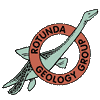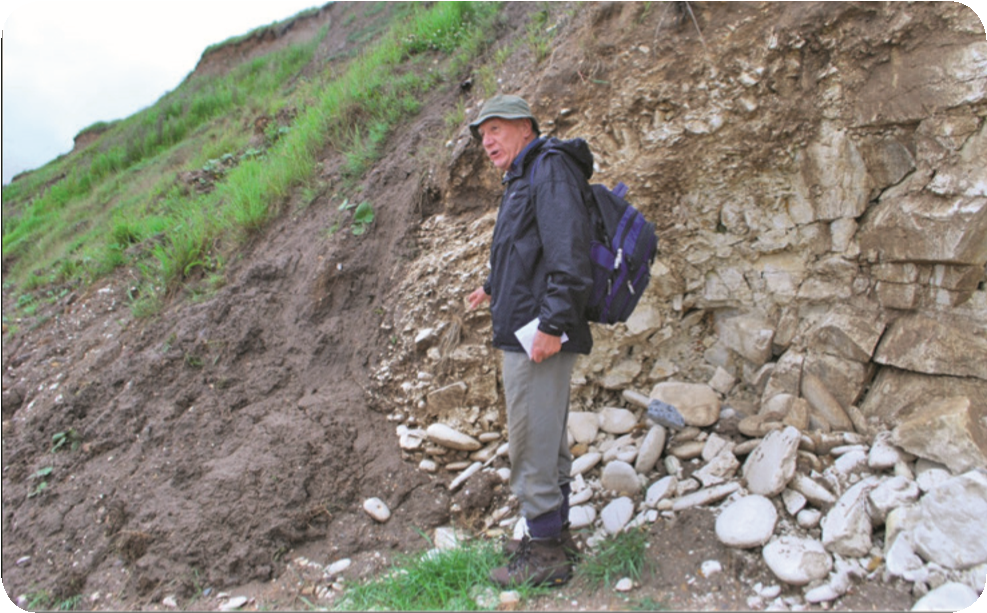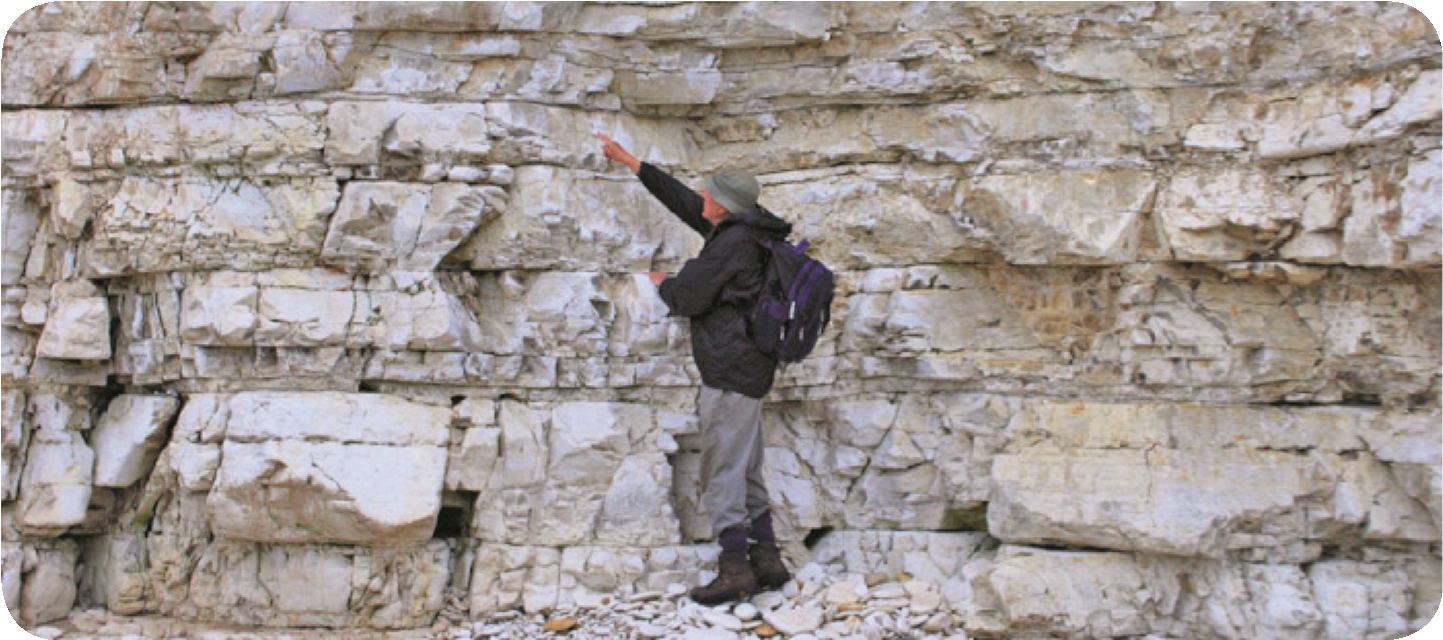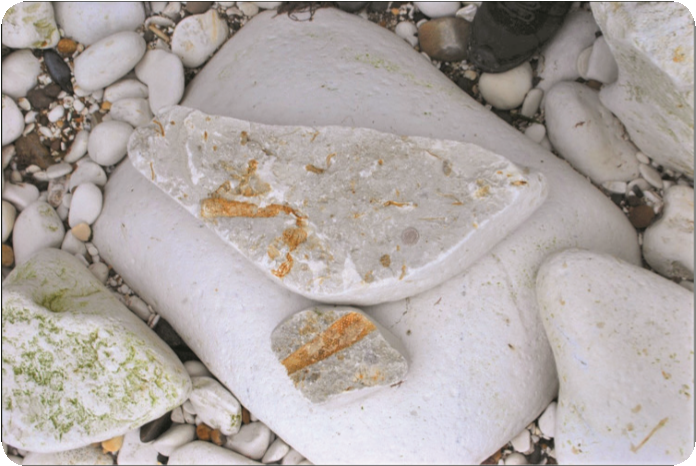This trip was led by Pete Rawson and Rodger Connell. Fortunately, the mist and drizzle that had threatened a damp day cleared for the duration of the trip. The party met at the cliff top car park (GR TA 198685) in Sewerby village and descended to the shore via Sewerby Steps.
After a short walk westwards across the foreshore strewn with boulders of chalk, the party reached the famous ‘Sewerby Buried Cliff’ exposure where the chalk cliff terminates against glacial deposits. This exposure is very important for understanding the glacial and interglacial chronology of the area, particularly the Basement and overlying tills.
Although collapse of the overlying superficial deposits has covered part of the exposure, Pete Rawson was able to point out the Chalk cobbles that form a shingle beach raised about a metre above the modern beach level. This horizon, which dates to about 116,000 – 128,000 years ago, has yielded a fauna including elephants, rhinoceroses, and hippopotamuses, indicative of the last (Ipswichian) interglacial.
The party walked back to the bottom of Sewerby Steps where lunch was taken. After lunch, the party continued to walk eastwards along the beach towards Danes Dyke. The cliffs here are formed by the chalk of the Flamborough Formation (Danes Dyke and Sewerby Members) which dips to the southwest allowing the party to examine over 60 metres of the section in the cliffs and on the scar. Flints are not present in this part of the chalk succession, but meticulous mapping of numerous thin marl beds provides a stratigraphic framework that can be correlated regionally.
While fragments of echinoids and bivalves are common in the chalk, the palaeontological highlight of the trip was undoubtedly the Flamborough Sponge Bed. This famous locality is a SSSI where hammering is prohibited, however participants were able to find a number of nice sponge specimens in boulders on the foreshore.
The final locality was the dramatic interglacial meltwater channel that cuts the chalk at Danes Dyke. Here Rodger Connell gave a vivid account of the glacial and interglacial geology of this part of the Yorkshire Coast and the party examined the sedimentary fill of the channel and discussed various depositional models that account for its formation.
The party left the beach at Danes Dyke and returned to the Sewerby car park via the cliff path, arriving just before the weather closed in again.




